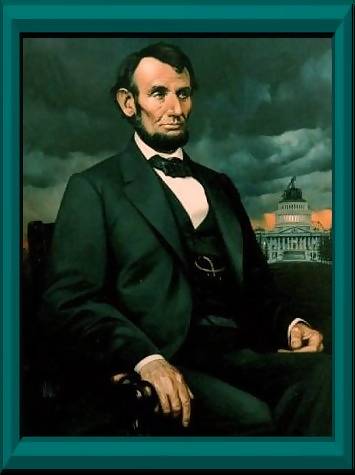Reconstruction

|
Reconstruction |
|
| He rode into the capital in an open carriage ignoring his people about the thought of being shot or killed. He was the sixteenth president of the United States of America. Many people feared their new president a coward. Abraham Lincoln had endorsed a lenient plan of reconstruction but a group of radical republicans with the U.S. congress resisted readmitting the rebel states without first imposing preconditions. A series of laws passed by the federal government established the conditions and procedures for reinstating the southern states. Much of the force for reconstruction invaded the social and political states of the freed slaves of the southern states. | |
| In response to efforts by southern states to deny civil rights to free slaves. Congress came up with a Civil Rights Act in 1866 and again in 1875. This led to conflict with President Andrew Johnson, who vetoed the Civil Rights Act of 1866: but his veto was overridden. After solid republican gains the midterm elections, the Reconstruction was passed on March 3, 1867: the last morally 1868. The first Reconstruction act divided ten confederate states into five military distributions. Northerners, known as carpetbaggers, moved south to participate in southern governments to avoid conflict in the North. Republicans assumed control of all state governments and began to pass loads and loads of civil right laws legalizing interracial marriage and ensuring black schools and a variety of other ambitious proposals. Former slaves were given very respectable ranks in the governments. They were usually state senates or state legislators. | |
| Many blacks also became judges, mayors, sheriffs and deputy governors. The republicans attempted to assist newly freed slaves by the establishment of the Freedmanís Bureau. Three constitutional amendment abolishmentís were passed in the wake on the Civil War. The thirteenth amendment abolished slaves throughout the U.S. the fourteenth granted civil rights to Negroes. The fifteenth granted Negroes the right to vote. The fourteenth amendment was opposed by the southern states, and as a precondition readmission to the Union, they were required to accept it. 1870 readmitted all southern states and all but five hundred confederate sympathizers were pardoned when president Ulysses S Grant signs the Amnesty act on may 22, 1872. Reconstruction until 1877, when the contentious presidential election was decided in favor of Rutherford B. Hays. |  |
| The conflict between president Abraham Lincoln and the United states Congress during the Civil war regarding the administration of occupied areas of the south presaged an enduring institutional conflict over reconstruction. Reconstruction was the period of terror the American Civil War when southern states of the defeated confederacy, which had seceded from the United States were reintegrated into the Union. Throughout the summer of 1865 after Lincolnís death Johnson was to carry out Abraham Lincoln's reconstruction program. Reconstruction was already beginning before the Civil War was even over. Lincoln believed that his reconstruction program would help stop and shorten the Civil War. | |
| He hoped to shorten or help stop war by giving war-weary confederates a motive for laying their arms and hope of being able to shape their own post war destiny. There was a challenge in who was going to rule the Reconstruction program Lincoln and his senate. Lincolnís own party was becoming Radical Republicans against him. In his third annual message to congress on December 8, 1863, Lincoln for the first time presented a program for Reconstruction, a plan marked by considerable leniency. The message was proceeded on the same day by a presidential proclamation that laid down the conditions for reconstruction. | |
| Lincolnís plan was based on three
main things: that the southern states had never legally been out of the
union; that they could be restores as soon as their political institutes
were properly reordered; and the reconstruction was larger an executive
function. He carried out this plan throughout his entire life the
constitution of the united states even says that the president ďshall
have power to grant reprieves and pardons for offenses against the United
States Of America except in case of impeachment." Lincolnís plan is
called One plan involves citizens, one involves state. Confederate people
had given up citizenship, so they had to get it back to vote. They also
had to write new constitutions. Andrew Johnson could not carry out
Lincoln's plan of Reconstruction. |
|
Bibliography
| We Must not be Enemies: Lincolns First Inaugural Address. http://edsitement.neh.gov/view_lesson_plan.asp?id=246 (May 9. 2005) |
| Reconstruction,http://wikisource.org/wiki/Abraham_Lincoln's_final_public_address (May 9, 2005) |
| The World Turned Upside-down: Reconstruction in Texas, http://www.austin.cc.tx.us/1patrick/his1693/reconstr.html ( May 12, 2005) |
| Reconstruction and the American Civil War, www.anythingarkansas.com/ arkapedia/pedia/Reconstruction/ ( May 12, 2005) |
| Abraham Lincoln: A Program for Reconstruction, http://search.eb.com/elections/pri/Q00085.html (May 12, 2005) |
| United States History 1865-1877, http://carbon.cudenver.edu/~rpekarek/Reconst.html (May 12, 2005) |
| Lincoln's picture, http://www.battleofsac.com/abeLincoln.htm (May 13, 2005) |
| Liberty picture, http://carbon.cudenver.edu/~rpekarek/ (May 17, 2005) |